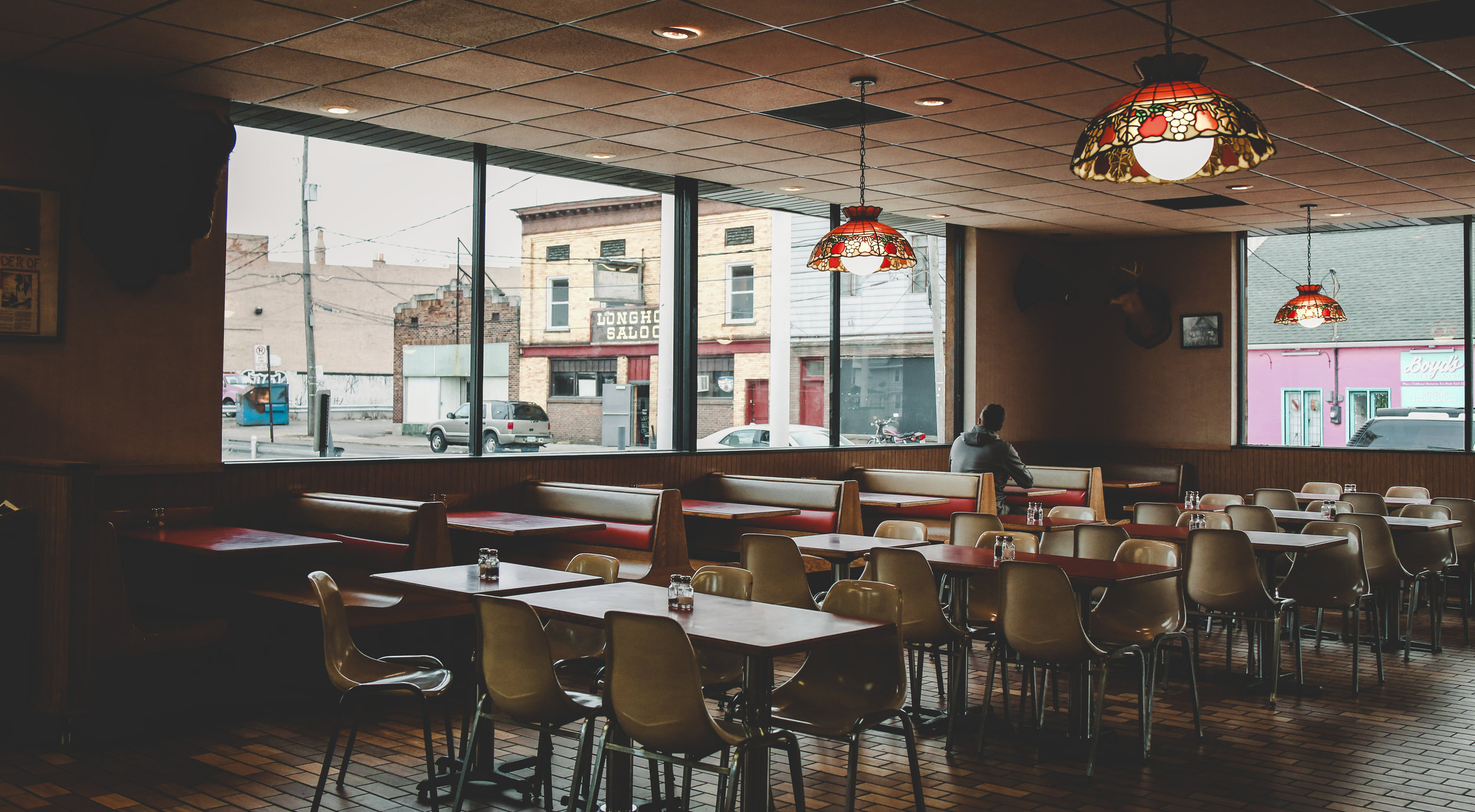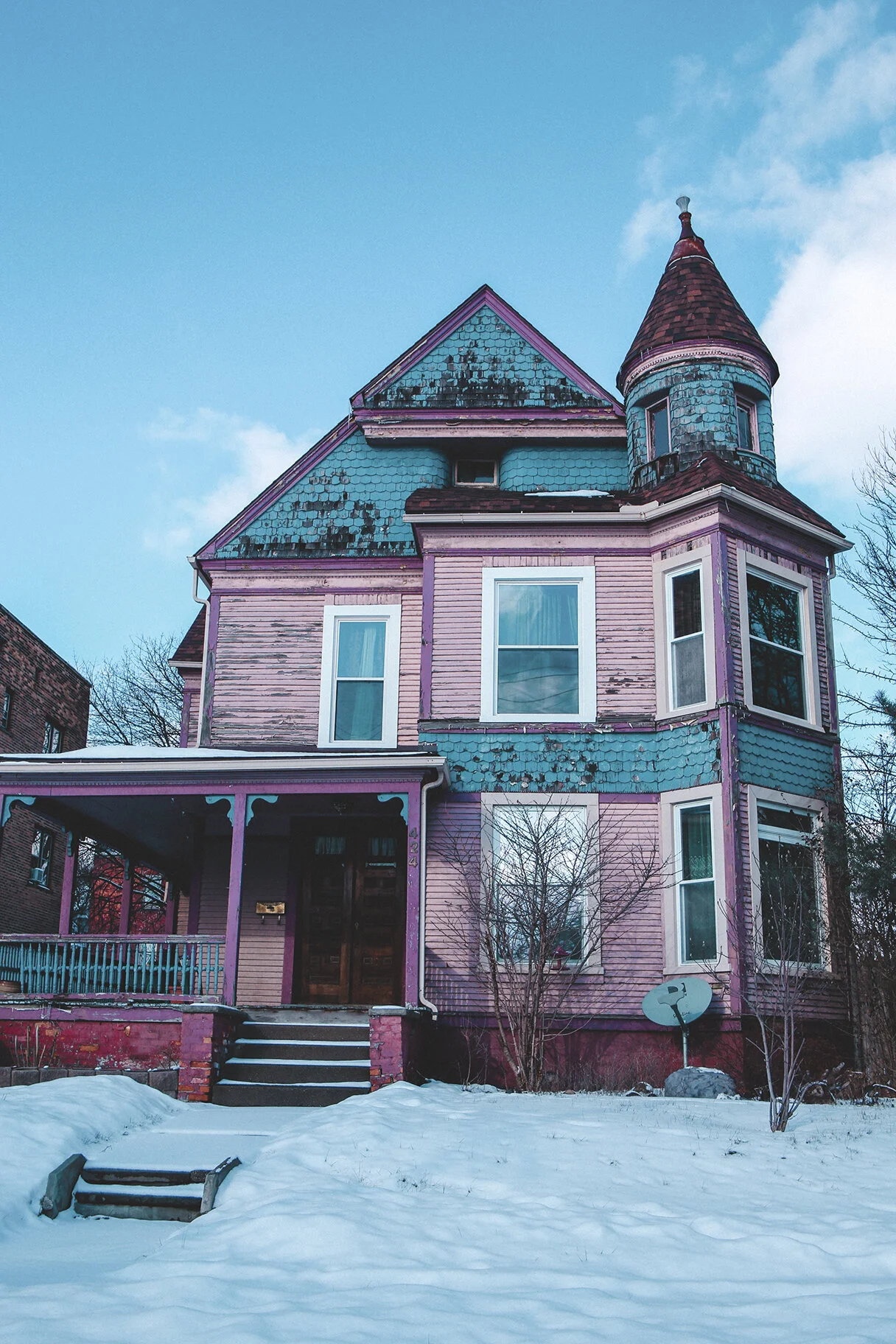
The Toledo Project
The Toledo Project



Every Toledoan remembers their first Rudy’s hotdog. A Toledo staple since 1920, the tradition of going to Rudy’s is one that was passed down from generation to generation in my family and many others. President Barack Obama even paid a visit in 2011 and gave his own rave reviews.

On the East side, Willow Cemetery is overlooked by Toledo Oil Refining Company. The cemetery originated in 1856, while the oil plant celebrated its 100th anniversary last year. Willow Cemetery prides itself with extremely affordable grave pricing.

Toledo was ranked in the top 100 Most Dangerous Cities In America. The city is identified as the 4th largest in recruitment for sex trafficking, due to the intersection of two major highways, I-75 and I-90. Other factors that contribute to this are Ohio's proximity to the Canadian border, and a large presence of strip clubs, agricultural camps, and massage parlors.



The Pythian Castle was built in 1890 to be used as a meeting place for a secret fraternal society. After the group left the area in the 1950s, the building was sold to Greyhound Lines, and then to a resident who created a youth center and rented out spaces to small businesses. A fire in 1972 deemed the building unsafe and unusable, and swallowed up the money of any brave buyer who attempted to reconstruct the collapsed roof and floors. The building was finally purchased in 2013 for $300 and underwent renovations in 2017 that will pick back up later this year. The sidewalk surrounding the Pythian Castle is taped off to the public due to the building’s instability.

Larry, age 63, told me stories of his humble upbringing near Polish Village on the East side of Lagrange in a prominent black neighborhood. He believes that much of Toledo’s decline is due to poor decision making by city planners and elected officials who focused on urban planning in suburbs rather than downtown.
“This city grows to the point that it wants to. If they cared about fixing these areas, it would have been done by now. The youngest generation has no hope.”
Larry requested not to be photographed.


Old West End is one of Toledo’s most historic and distinctive neighborhoods. Twenty-five city blocks contain one of the largest collections of Late Victorian and Edwardian houses left in the United States. The neighborhood was designed and constructed starting in 1866, and served as a community for Toledo’s wealthiest residents in its heyday. By 1930, many of the citizens living in this are could no longer afford their 10,000 square foot houses and the area slowly diminished. The decline was hastened further by the construction of I-75 which split the neighborhood in half and bulldozed dozens of blocks to the ground. While some houses still stand proud, the majority are disheveled and ill-kept.

Jody, who preferred not to give her age, was eager to show me around the property of Mohr Brothers Bottling Co., a soda pop company that opened its doors in 1902 and was sold in the 1980s. Jody and her husband rent out properties on the North side and have repurposed the warehouse into a secondhand shop.

Jerry’s Pub is located in a neighborhood on the Ash St, just down the block from the Libbey Glass Factory. Since I started this project, it has been reported that Jerry’s Pub has shut its doors permanently.

The Nasby Building sits at one of Toledo’s largest “four-corner” intersections on Madison Avenue. This monument was erected in 1895 and served as the city’s tallest building for a decade. Through years of service, the building was eventually renovated in the 1960s with asbestos panelling, deeming it unfit for use. It stood vacant and lifeless for decades before being purchased in 2017 for a sum of just $10. The building is currently preparing for renovations that will take place starting the summer of 2019.


The Anthony Wayne High Level Bridge is Toledo’s only historic bridge left in the city, and a dominant landmark. The bridge was constructed in 1931 to bridge the gaps between the East and West sides of the city over the Maumee. Its construction provided many labor jobs during the Great Depression. The bridge recently underwent a $28 million renovation that was completed in 2015.

The U.S.Census Bureau reported that as of the 2010 census, the city is 59% White, 8% Hispanic or Latino, and 27% Black. The majority of the civilian population is in the labor force, and the medium household income is about $36,000. Over a quarter of Toledo citizens live below the poverty level. About 44% of students graduate from high school, while 12% of Toledoans have completed a Bachelors Degree.


Milo’s Meat Market, one of Toledo’s oldest and most beloved butcher shops, is located on the North side. Paul De Land, pictured behind the counter, and his brother Steve have been running the shop since their father purchased it in the 1970s. The shop itself has been in business since 1930s.

The massive Collingwood Arts Center is a focal point on the edge of the Old West End neighborhood. The Gerber House located in front dates back 1872 and the connecting building behind it served as a convent in 1905. The building eventually became a college and then a retirement home before enduring years of vacancy. Pat Tansey purchased and restored the building in 1985 to keep it from getting demolished and gave life to a community center that still operates today.

Originally known as the Fiberglas Tower, this skyscraper was erected in 1969 by Owens-Corning Corporation and served its purpose until 1993, when it was vacated due to the discovery of asbestos. The building stood untouched for almost 20 years because of costly expense of renovation, but some floors were finally repurposed in 2017 into luxury apartments and renamed Tower on the Maumee.


The Toledo Union Terminal, commonly known as Martin Luther King, Jr. Plaza thrives as the busiest rail station in Toledo and was redesigned in a modernist style of architecture in the year of 1950.



The Historic Hillcrest, located on Madison Avenue in downtown Toledo , opened its hotel doors in 1929. The hotel boasts many famous guests in its history from musicians to artists, one guest being Amelia Earhart. The hotel closed in 1990 but issued a 12 million dollar remodel to reopen as a residential apartment building.

Faded paint is the only remaining identifier of Great Lakes Terminal Warehouse, which went bankrupt in 1936.

The skeleton of the building is all that remains of Hotel Seagate, built in 1975. The building was vacated in 2009, and demolition began in 2016 but was halted shortly after. Since 2017 many developers have signed onto the project of converting the building to a new hotel, although no progress has been made.

Some efforts are being taken to restore the old and abandoned buildings. ProMedica moved their healthcare headquarters to the historic steam plant at the heart of downtown in 2017.

Toledo was once dubbed as “the future great city of the world” by Jesup Scott in 1868, and was thought to be the New York City of the Midwest.

An abandoned construction sight at the base of the Hotel Seagate.




Erie, age 35, is currently homeless but has resided at the Cherry Street Mission in the heart of downtown for the last 6 years. When asked what his favorite part of Toledo was, he told me he is still trying to figure that out.



Present day, The Old West End has several historical councils and serves as a diverse art-centered community for longtime residents, minorities, and immigrants. Still, there is not enough city capital or residential interest to take care of many of dilapidated and neglected homes in this area.


Sitting just across the street from Rudy’s Hotdogs is another beloved staple, Boyd’s Retro Candy which serves vintage candy and soda to people of all walks of life.

Libbey Inc. celebrated 200 years of business in 2018. Libbey first opened its manufacturing plant doors in 1888 and established itself as a benchmark of success in creating the powerful industry in Toledo, also known as The Glass City.


An eviction notice on a condemned house is a sight that is all too familiar for many Toledo Residents.
















































